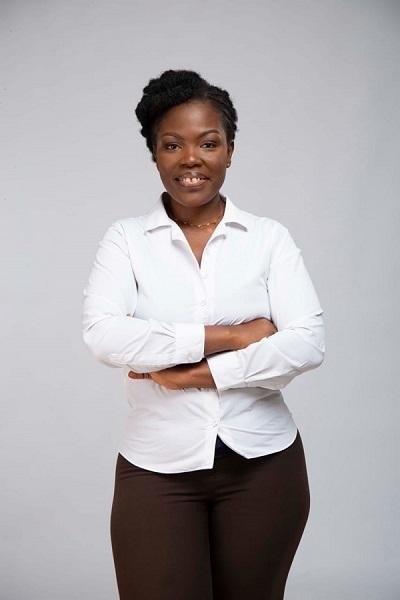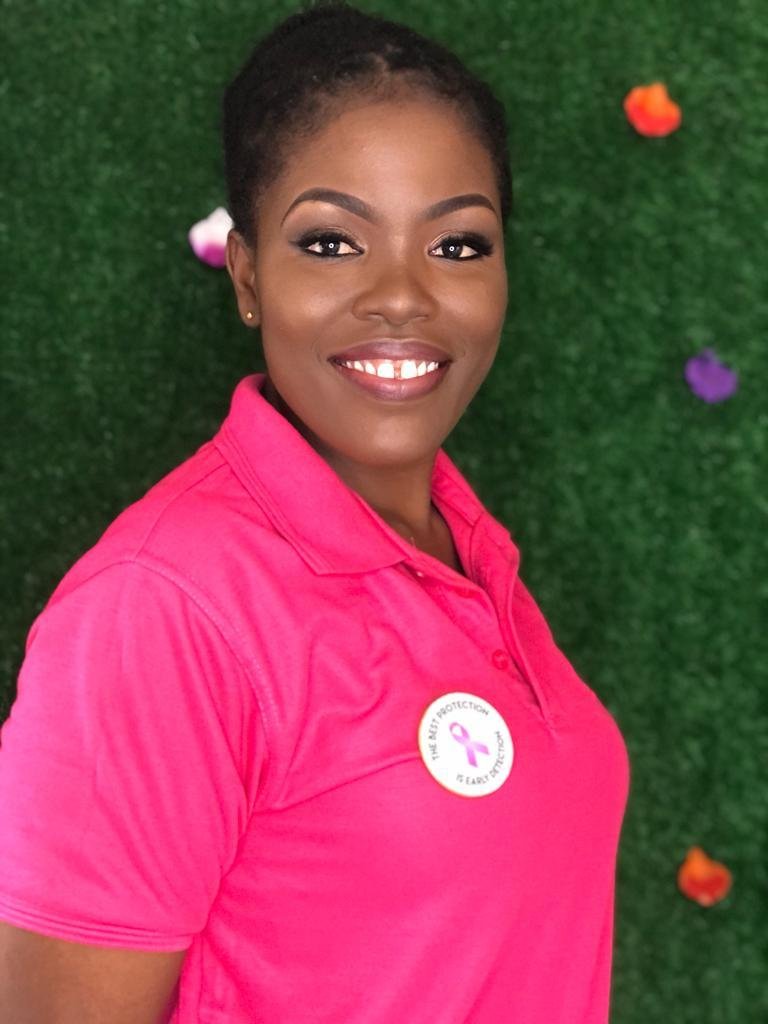Gender
Beyond the flavours: the hidden dangers of shisha smoking
On a hot Sunday afternoon, the Labadi beach or other leading beaches are filled with people from all walks of life, both foreigners and Ghanaians alike.
Children are seen playing in the sand while adults enjoy some food and drinks or bath in the sea amidst loud music.
Traders, horse riders and pub owners would also cash in, pitching their business to revellers at the beach.
As dusk settles in, some people would leave while others troop in, with the place becoming livelier as the beach is filled with a lot more people.
The atmosphere is choked with an unusual smell of smoke; a smoke emanating from random tables on the beach.
It is usually from a flavoured water pipe popularly known as shisha, sitting on the tables and used mostly by women who shared the same tube with friends on the same table.
This is often the sight at most beaches on holidays or weekends.
An attendant at the Labadi beach, told this writer that, shisha was mostly taken by women and the price ranges from GH¢50 to GH¢70 at the beach.
She also said the price is higher at other places saying “you can also get it from GH¢100 to GH¢200.
This mirrors what happens at other beaches, clubs, pubs and social gatherings across the capital and the country at large.
Shisha, also known as hookah or water pipe, is another form of combustible smoking of tobacco, where flavoured tobacco is burned with charcoal, while the smoke is guided through water via tube before it is inhaled by the smoker.
The intention behind the passage of tobacco smoke through water is to filter the smoke to make it safer. Also, the added flavour, mostly fruity, is to enhance the packaging and improve desirability.
This type of smoking was invented in ancient India, and it has remained a tradition to the Middle East, and a common practice for hundreds of years.
It is estimated that, globally, about 100 million people smoke shisha on a daily basis and most of these are adolescents, high school students, and university students.
Shisha smoking has become a common practice in social gatherings, generally shared in a group of four and five individuals and usually lasts from 20 to 80 minutes with 50–200 puffs per session.
The use of Shisha with tobacco products leads to particulate matter such as nicotine, carbon monoxide, and nitrogen oxide. The presence of nicotine in smoke is the primary cause of dependence on tobacco-related products, hence its addiction.
The Ghanaian Times newspaper reported on November 6, 2024 that a new survey by the World Health Organisation (WHO) has revealed that more young women in the country were engaged in various forms of smoking on a daily basis than their male counterparts, resulting in cancer, heart and lung-related diseases in recent times.
It said WHO noted that while traditional cigarette smoking may be on the low, ‘Shisha,’ was rife particularly among persons 18 to 29 years, across the country.
“More than half of current tobacco smokers report smoking on a daily basis. Among daily smokers, 73.6 per cent smoked manufactured cigarette with individuals consuming three sticks of manufactured cigarettes per day on the average.
Among daily smokers, younger persons began smoking at an earlier age compared to their older counterparts. The proportion of current smokers who smoke shisha is 7.8 per cent, which is more prevalent among age group 18 to 29 years and highest among women,” it revealed.
Principal Investigator and Deputy Director of Disease Surveillance at the Ghana Health Service (GHS), Dr Dennis Laryea, expressed concern over the increasing rate of females smoking shisha in the country which holds dire consequences for the future.
“Once females take up something, it’s easier to drag the males along. And once we’re seeing this in younger women, it also means that they are likely to grow up with it and that is a potential risk for our development,” he stated.
Dr Laryea disclosed that while ‘Shisha’ may be portrayed as a trendy, favourable substance, it was highly harmful as it contained chemical which could be more dangerous to one’s health due to the longer smoking sessions. In an interview with the Principal Regulatory Officer with the Tobacco Products Department of the Food and Drugs Authority (FDA), Mavis Danso on Friday, she said Shisha is legal because it is a tobacco product but its smoking is not allowed in public areas.
She explained that smoking of shisha is only allowed in designated areas, adding that it is so because tobacco products are scientifically known to cause a lot of illnesses which includes Non-Communicable Diseases (NCDs).
“Once you smoke as an individual, you put yourself at risk and also endanger the people around you who also inhale your smoke which is called second-hand smoke,” she stated.
She again explained that the smoke coming out of the nostrils of the one smoking and also from the end of the cigarette or from the Shisha device, inhaled by those around is known as secondary smoking and also endangers the lives of the latter.
So in order for government to protect its citizenry, there is a law on ban of smoking at public places except in designated smoking area saying “you are not supposed to endanger other people once you are smoking.”
Ms Danso said, the department often engage in routine monitoring which includes at night as well as public education to ensure enforcement of the law
She mentioned that, her department also relies on voluntary complains from the public, stating that, citizens were expected to be enforcers of the law by reporting to the FDA or question the owner of the place.
She was optimistic of Ghana becoming a Shisha free country but said it will not only depend on enforcers but also on facility owners and vigilant individuals who ensure that the right thing was done.
Ms Danso said there was a high prevalence of shisha smoking among women as well as a misconception that shisha was better than smoking, a notion she described as untrue.
She mentioned that an hour use of shisha was equivalent to smoking 200 sticks of cigarettes.
Ms Danso also mentioned that the idea that it passes through water and the contaminants remained in the water was false and that once the substance is taken, it affects the entire body.
According to her, there was the tendency of it being additive due to nicotine found in it and also has risk factors such as heart and lung diseases and also cancers, adding that “there is no safe form of tobacco, whether smoked, inhaled or whatever forms it comes in, it is harmful and can cause serious health implications to the body.”
According to the World Health Organisation (WHO), shisha also known as water pipe tobacco smoking was probably associated with oral, oesophageal and lung cancers and possibly with gastric and bladder cancers.
It said, shisha has also been associated with respiratory disease, cardiovascular disease, periodontal disease, low birth weight, perennial rhinitis, male infertility, gastro-oesophageal reflux disease and impairment of mental health.
With women, shisha can cause higher risk of preterm menstrual pause, reduced bone mineral density, infertility, and ectopic pregnancy; it is also associated with a higher rate of infant mortality and can lead to intrauterine growth restriction and the rise of certain chromosomal anomalies.
The Sustainable Development Goal (SDG) three which states “good health and well-being” targets reduction in the global maternal mortality ratio to less than 70 per 100,000 live births, reduce by one third premature mortality from non-communicable diseases through prevention and treatment and promote mental health and well-being by 2030.
This can be achieved when government and its health agencies, non-governmental organisations and individuals help enforce existing laws on shisha smoking.
Also, workshops, seminars should be organised by various stakeholders for young women focusing on the dangers of shisha, utilise social media platforms to raise awareness about risks of Shisha while sharing engaging content and personal stories and also create safe space and engaging recreational spaces for young women offering alternatives to shisha cafes and bars.
More so, it is important for facility owners to obey the laws on shisha smoking while the citizenry reports offenders to the FDA for appropriate punishments.
By Jemima Esinam Kuatsinu
Gender
Awareness: First weapon against breast cancer

October is globally observed as Breast Cancer Awareness Month -a period dedicated to raising awareness, honouring millions of lives touched by the disease, and reaffirming the worldwide commitment to equitable access to care and improved survival for all.
This annual observance, marked in countries across the globe, serves as a rallying point to increase attention and support for early diagnosis, treatment, and survivorship. The 2025 theme, “Every story is unique, every journey matters,” places a spotlight on the deeply personal experiences of breast cancer survivors and patients. It underscores the diversity of their struggles while reinforcing the urgent need for compassionate, timely, and quality care regardless of geography, income, or background.
Behind every diagnosis lies not only a medical condition but also a story-one filled with courage, resilience, and hope. These stories extend beyond individuals, shaping the experiences of their families, friends, and entire communities.
Breast cancer continues to be the most diagnosed cancer among women worldwide. According to the World Health Organisation (WHO), approximately 2.3 million women were diagnosed in 2022, and about 670,000 died from the disease.
“These are not just numbers but mothers, sisters, daughters, and friends who deserve hope and dignity,” the WHO emphasises.
Survival rates, however, differ starkly across regions. While the five-year survival rate exceeds 90 per cent in high-income countries, it drops to 66 per cent in India and 40 per cent in South Africa. The reasons are clear: unequal access to early detection, timely diagnosis, and effective treatment.
If current trends remain unchecked, both incidence and mortality are projected to rise by 40 per cent by 2050. To address this, the WHO established the Global Breast Cancer Initiative in 2021, working with partners to strengthen health systems and reduce preventable deaths worldwide.
The situation in Ghana
In Ghana, breast cancer poses a particularly pressing public health concern. It is the most common cancer among women, accounting for about 15 per cent of all malignancies.
Studies reveal a troubling trend: almost 70 per cent of women are diagnosed at advanced stages, where treatment options are limited and survival rates much lower. In 2012, nearly half of Ghanaian women diagnosed with breast cancer lost their lives to the disease.
These statistics point to late presentation, cultural stigma, and limited access to screening facilities as some of the key factors fuelling high mortality.
Experts warn that unless more women come forward for early screening and timely treatment, these figures may remain stubbornly high.
Executive Secretary of the Breast Cancer Society of Ghana (BCSG), Mrs Georgina Kumah-Dzagah, said the numbers are not just statistics, they represent lived experiences. A survivor herself, she knows first-hand the difference early detection and treatment can make.
“My journey could have ended differently if I had ignored the early signs,” she reflected. “That is why the theme ‘Catch it early, treat it right, survive it’ is not just a slogan to me. It is a lifeline that can save countless women.”
Mrs Kumah-Dzagah believes awareness is the first weapon in the fight. She stresses that women must be proactive, know their bodies, and act quickly when something feels unusual.
“A lump, nipple discharge, or changes in the skin should never be ignored or treated with fear and silence,” she explained. “Hospitals and screening centres are there to help us, not to harm us. Early detection gives the best chance for a cure.”
The Executive Secretary also raised concern about the role of misinformation and reliance on untested remedies saying, too often, delays and misplaced trust in alternative cures cost lives.
“Treating it right means trusting science and trained professionals,” she stressed. “Modern treatment -whether surgery, chemotherapy, radiotherapy, or hormone therapy -may be tough, but it saves lives. I went through these treatments myself, and though the journey was not easy, I am living proof that treatment works when given at the right time.”
Her message resonates strongly in a society where cultural beliefs sometimes discourage women from seeking hospital care, and myths about breast cancer fuel stigma.
For Mrs Kumah-Dzagah, survival is not simply about conquering the disease. It is also about reclaiming life, hope, and purpose.
“Breast cancer is not a death sentence,” she affirmed. “Survivorship comes with challenges, but it also brings strength. Today, I speak not just for myself but for every woman still in the fight.”
A call for collective action
Mrs Kumah-Dzagah believes that breaking the silence and stigma around breast health is critical. She called on women, families, and communities to support open conversations and proactive health checks.
She said “let us be bold to check, quick to act, and committed to supporting each other. If we catch it early and treat it right, we will surely survive it.”
She said, BCSG continues to lead nationwide campaigns to create awareness, encourage screening, and support patients and survivors.
Through advocacy and education, the organisation, she said reminds women that vigilance, timely treatment, and community support can turn the tide against breast cancer.
By Esinam Jemima Kuatsinu
Join our WhatsApp Channel now!
https://whatsapp.com/channel/0029VbBElzjInlqHhl1aTU27
Gender
Trained but jobless …the human cost of Ghana’s skills mismatch

ALONG the busy corridors of the George Walker Bush highway, in Accra, 26-year old Nana Akua Afriyie arranges her beautiful sewn African print dresses on mannequins in front of her shop, hoping to attract buyers.
She trained in fashion design at a Technical and Vocational Education and Training (TVET) school in the Ashanti Region and graduated with high expectations. But three years on, she admits the journey has been tough.
“Everywhere I go, they tell me the same thing -they already have enough fashion designers,” Akua said with a wry smile.
“I wish I had studied something like agro-processing or Information Communication Technology (ICT), because that is where the jobs seem to be.”
Her story is not unique. Across Ghana, TVET graduates are struggling to find work, even as employers complain about difficulties in hiring people with the right skills.
This paradox lies at the heart of a new study commissioned by United Nations Children’s Fund (UNICEF) Ghana in partnership with the Government of Ghana, which has revealed deep structural gaps in the TVET system.
Oversupply and
shortages
The study, conducted across 57 pre-tertiary public and private TVET institutions, found a sharp mismatch between the skills offered in schools and the skills demanded on the labour market.
Only one out of the 57 schools offers training in agriculture which is a dominant driver of Ghana economy. This is despite employers reporting a rising need for skilled workers in agro-processing and agricultural technology.
The situation in ICT is only slightly better. Although the digital economy is growing rapidly, just four TVET institutions provide ICT-related training.
By contrast, trades like fashion design and garment-making are oversupplied. Almost every TVET institution offers them, leading to a glut of graduates competing in a saturated field.
Kwame Bediako, who runs a medium-sized agro-processing company in Ejisu, says the imbalance is hurting businesses. “We need young people who understand modern farming, post-harvest handling, and agro-processing.
But the schools are not training them. Instead, every year, we see hundreds of fashion and hairdressing graduates with no jobs waiting for them,” he told this paper.
Employment gap
Beyond the mismatch of trades, the study also uncovered a “perception gap” between employers and graduates.
Employers surveyed consistently reported that TVET graduates lacked adequate practical exposure and soft skills such as teamwork, communication, and problem-solving. Yet when students were interviewed, many expressed confidence in their preparedness for the job market.
“It’s like we are speaking two different languages,” said a construction contractor in Kumasi who took part in the survey.
“We advertise for masons or welders, and applicants come with certificates but cannot deliver basic tasks on-site. Meanwhile, they believe they are fully qualified. It is frustrating for everyone.”
This gap highlights a deeper issue: the way TVET outcomes are measured.
While many institutions prioritise exams and certification, employers value real-world performance, adaptability, and reliability – qualities directly tied to the targets of Sustainable Development Goal (SDG) eight which seeks to achieve decent work and economic growth.
Infrastructure
under strain
The introduction of free TVET education in Ghana has been hailed as a bold step to expand access and empower more young people with employable skills. But the surge in enrollment has placed immense pressure on schools.
Workshops, classrooms, and training equipment are overstretched, making it difficult for instructors to deliver effective Competency-Based Training (CBT) – a method designed to give students practical, hands-on skills.
At one TVET school visited during the study, a single welding machine was being shared by more than 30 students, drastically limiting practice time.
“We are trying, but the resources are just not enough,” admitted an instructor who asked not to be named.
Interestingly, the study noted that private TVET institutions recorded higher CBT accreditation levels than their public counterparts, but both sectors face similar challenges of inadequate infrastructure and outdated equipment – a challenge that reflects the urgency of SDG nine: Industry, Innovation, and Infrastructure.
Ghana’s demographic
dividend at risk
With a youthful population, Ghana is one of several African countries projected to benefit from a demographic dividend – the economic growth that can result when a large share of the population is of working age.
But UNICEF warns that this opportunity may slip away if young people are not adequately prepared for the job market. High unemployment, job insecurity, and limited opportunities are already major concerns.
“TVET is a powerful pathway to equip young people with relevant skills,” the report stated. “But unless curricula, training, and infrastructure are aligned with industry needs, Ghana risks losing the benefits of its demographic advantage – and missing its commitments under SDG four: Quality Education.”
Workplace experience:
A partial fix
One of the ways schools have tried to bridge the skills gap is through Workplace Experience Learning (WEL) – placing students in companies for internships or apprenticeships.
While many employers support this, some expressed concerns about the risks involved. “It is costly to supervise students who come for training, and sometimes they slow down productivity,” said an ICT firm manager in Kumasi. “But we do it because we know the system needs it.”
Recommendations
and the way forward
The study made several recommendations to address the skills mismatch. Its suggested curriculum alignment. It called on schools to update curricula to reflect the skills industries need, especially in agriculture, ICT, and construction.
Also UNICEF urged schools to inculcate soft skills in TVET training, infrastructure investment and build stronger partnerships.
UNICEF called for a collective effort involving government, private sector, development partners, and communities to ensure that TVET fulfils its role as a driver of sustainable economic growth.
For Akua, the fashion graduate, the lack of opportunities has been discouraging. Yet she remains hopeful. “If I had the chance to retrain in ICT or food processing, I would do it. I don’t want to just sit at home,” she said.
Her words echo the aspirations of thousands of Ghanaian youth – ambitious, energetic, and eager to contribute, but often trapped by systemic shortcomings in education and training.
By Esinam Jemima Kuatsinu
Join our WhatsApp Channel now!
https://whatsapp.com/channel/0029VbBElzjInlqHhl1aTU27






